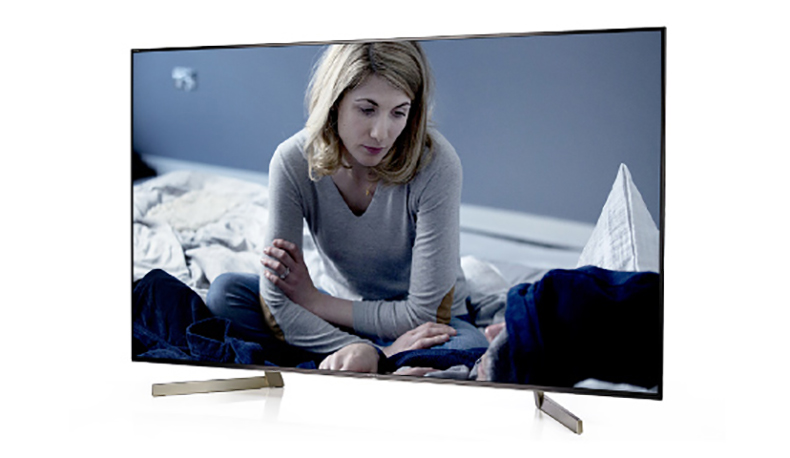What Hi-Fi? Verdict
It’s early days for 2018 TVs, but the Sony KD-65XF9005’s combination of flagship features and mid-range price make it something of a stunner
Pros
- +
Fantastic detail in the brightest and darkest picture elements
- +
Brilliantly bright and punchy
- +
Stunning but natural colours
- +
Loads of apps
- +
Clear sound
Cons
- -
Minor backlight blooming
- -
Bass-light audio
- -
Can be beaten for viewing angles
- -
Android OS is still frustratingly sluggish
Why you can trust What Hi-Fi?
Life in the mid-range must be tough. Too expensive to be considered a bargain and too cheap for all the flagship bells and whistles, it’s hard to generate much excitement about anything labelled ‘mid-range’ - and that includes TVs.
But there are rare occasions when the mid-range throws up something rather special – a television that combines some of the best features of the top-end with a price that’s affordable to more people. That’s what we’ve got on our hands here.
Features
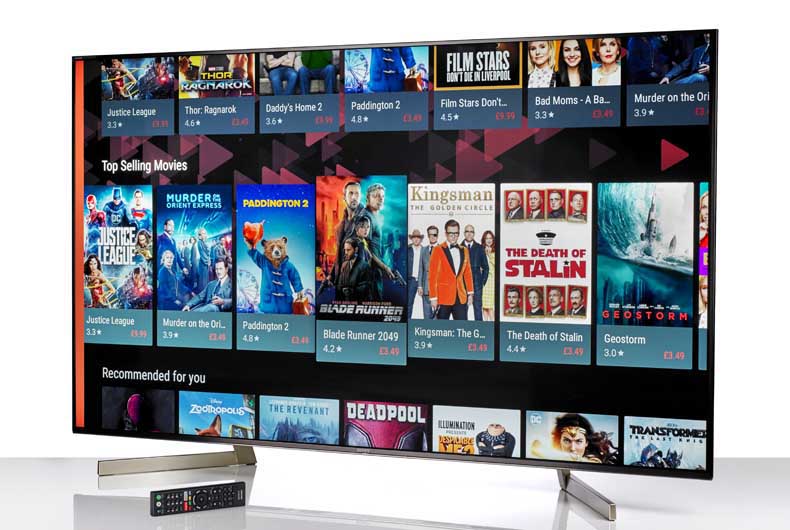
Like its predecessor, the XE9005, the XF9005 has a direct LED backlight with multiple zones that can be lit or dimmed independently.
Sony refuses to be drawn on how many of these zones the XF9005 has (more zones tends to result in greater control of contrast between closely packed bright and dark elements), but says it is more than last year’s model - and that it’s brighter, too.
Further improvements include the upgrade to Sony’s X1 Extreme processor, previously reserved for the company’s flagship models. This should result in faster operation and give access to more advanced picture processing features such as the 4K X-Reality Pro upscaling engine and new X-Motion Clarity motion processor.
Sony has chosen to stick with Android TV as its operating system, which results in the expected blend of pros and cons. On the pro side you get more apps than you’re likely to need.
Netflix and Amazon have you covered for subscription-based TV shows and films in up to 4K HDR quality, while BBC iPlayer, ITV Player, All 4 and Demand 5 provide catch-up content.
There’s Google Play Movies & TV, PlayStation Video and Rakuten for pay-as-you-go blockbusters, Plex and VLC for your own video files, and Deezer and Spotify for music.
MORE: Best video streaming services 2018
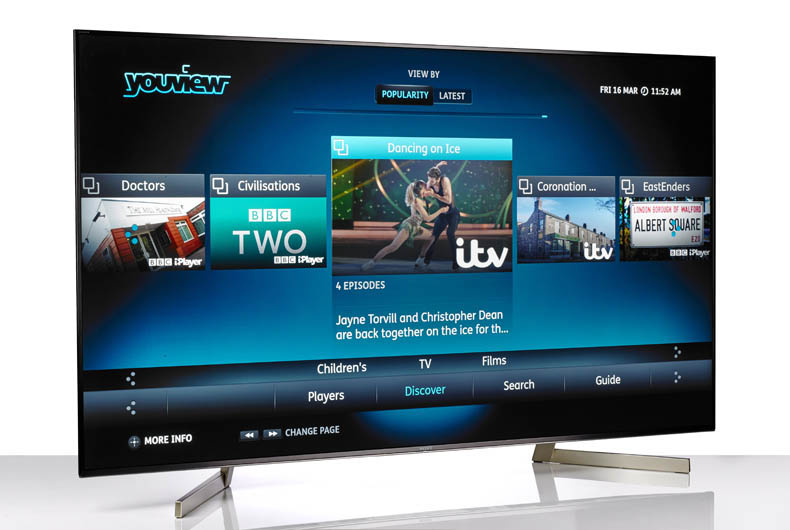
The only significant thing missing is a way to watch brand new films (other than Netflix Originals) in 4K and/or HDR. You’ll need to add a 4K Blu-ray player or Apple TV 4K for that, at least until Google finally rolls 4K streaming out to the UK.
But Android TV is still cluttered and sluggish in use, occasionally to the point of frustration. At times it’s almost unbearably slow, responding to your commands only after you’ve lost patience and issued another.
The X1 Extreme processor appears to be no match for the poorly optimised operating system, but Sony says an OS update from Android 7.0 to 8.0 will be available at some point.
You probably want to take Sony promises of software updates with a whole handful of salt, though. The Dolby Vision update to its 2017 TVs which was due last summer, for instance, still hasn’t appeared in the UK.
A Dolby Vision update is also due for the XF9005 at some point, but in the meantime there is HDR10 and HLG to be getting on with, so the initial lack of Dolby Vision isn’t a huge cause for concern.
MORE: Dolby Vision HDR – everything you need to know
Picture
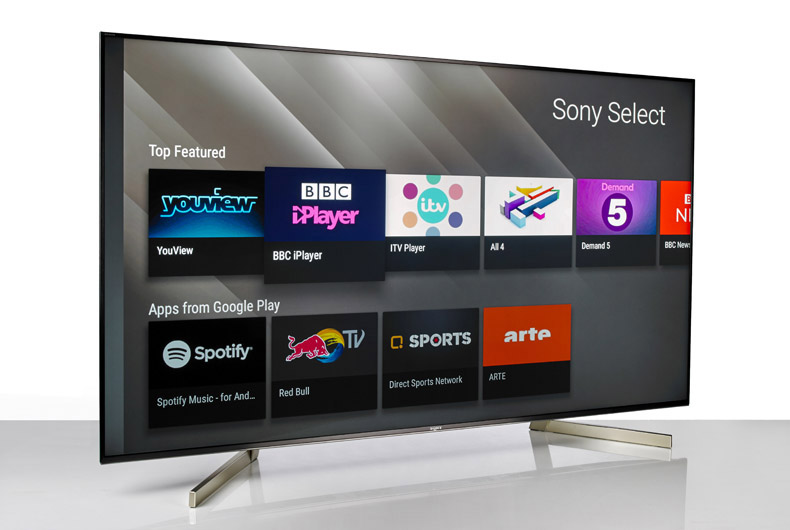
The opening 10 minutes of Guardians of the Galaxy Vol.2 provides a stern and complete workout for TVs - it’s one the Sony passes with flying colours.
The first thing you notice is the clouds, which might initially seem odd, but the sky (when viewed on this Sony) is so dramatic and pretty it’s impossible to resist.
It highlights one of the XF9005’s greatest strengths: its white performance. Not only does the TV go brighter than similarly priced rivals, its bright whites are packed with detail and nuance.
There’s texture and definition here that can’t be matched for this money, and the result is a fluffy cloud-packed sky that seems to stretch forever.
MORE: 4K Ultra HD Blu-ray – all the 4K discs on sale and coming soon
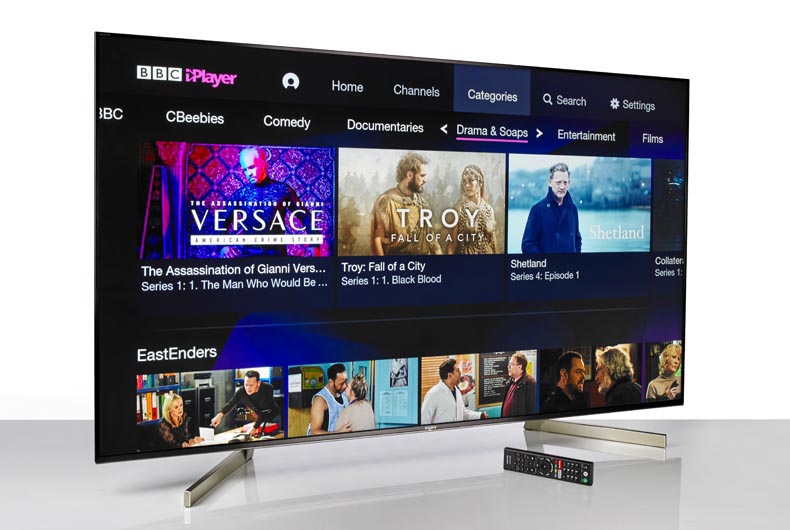
The yellow lettering that places the opening scene in 1980s Missouri pops from the screen in vivid fashion, and there’s an enticing lushness and vibrancy to the scene.
The more you watch, the more you realise the XF9005's colour balance is another serious strength. That vibrancy continues to impress as the action moves into space – the gold of the Sovereign planet, the panels of the platform where the opening battle (and dance) take place and the clothes of the Sovereign people have a genuinely rare radiance and lustre, the generators roil with angry, intense, orange energy, and the neon blasts of weapons fire and rainbow vomit are appropriately bright and dynamic.
But perhaps most impressive is that this exuberance combines with genuine subtlety and realism. Skin tones are exceptional: warm and vivacious but also realistic.
As is the case with the bright whites, there’s also greater detail and subtlety in the brightest colours. Where the cheaper Samsung UE65MU7000 occasionally hits the limits of its brightness and colour volume, resulting in some washout of colours, the Sony keeps on delivering strong, fresh hues.
In short, you’re simply getting more colours, and there are few better demonstrations of this than Ego’s exceptionally vivid planet, particularly as Gamora sits cross-legged outside as the sun begins to set.
MORE: What is Ultra HD TV and 4K TV? Everything you need to know
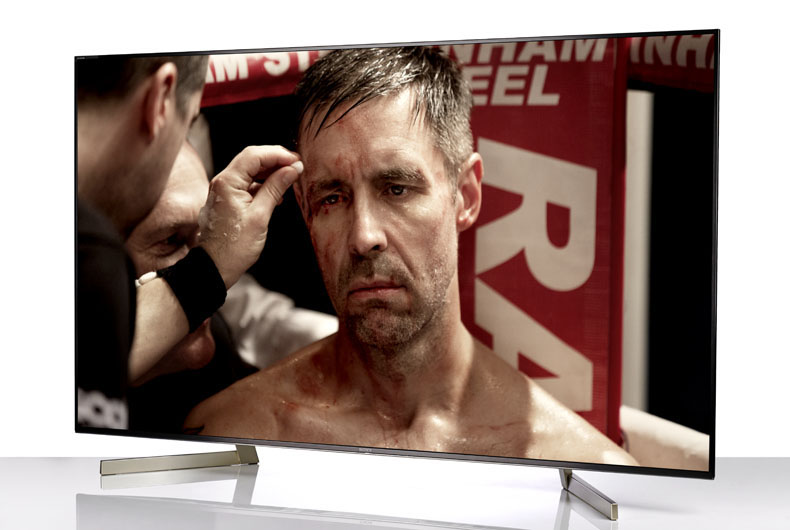
But this isn’t the end of the Sony’s strengths. Motion processing has long been a company forte, and the XF9005 continues the good work.
It delivers slow pans and fast action with crisp edges and no discernible judder – and without having to introduce the dreaded, unnatural soap-opera effect.
The improvements over last year’s model, which include a system that compensates for the dimming effect of motion-smoothing black frame insertion, are subtle – largely because Sony’s motion-processing was already so impressive.
Last, but by no means least, on the long list of the XE9005’s strengths is its black performance. While some TVs exaggerate their blacks, which can result in a strong, dynamic picture at the expense of some subtlety, the Sony is terrifically nuanced, delineating darker shades rather than delivering a dollop of pure black.
The result is quite exceptional detail in the darker parts of the image. The brickwork, rubble and rust of the abandoned warehouse in Looper is clear and textured.
Where many TVs lose a great deal to indeterminate gloom, background characters who appear as floating heads on some sets have clothes with shading distinct from the wall behind when the Sony gets hold of them.
MORE: How to set up your TV and get the best picture
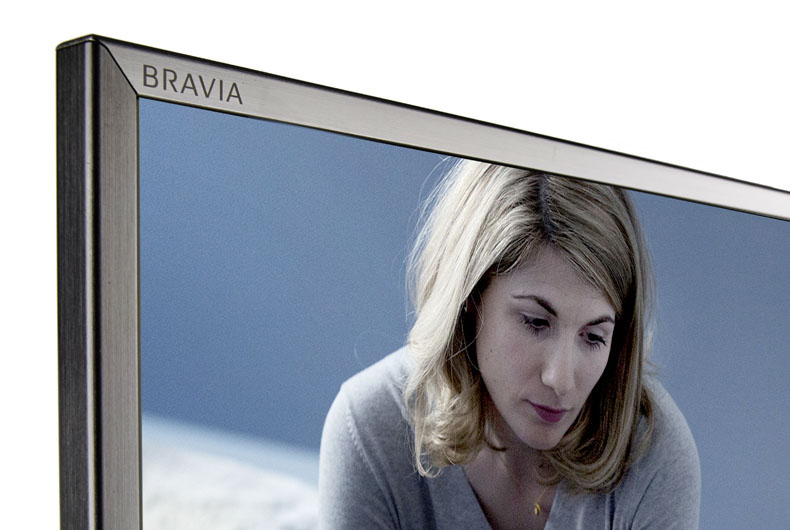
The Looper Blu-ray demonstrates the XF9005’s upconversion of SDR (standard dynamic range) signals to HDR, automatically enabled across all but one of the picture presets.
That may sound like a recipe for the overblown and inauthentic reproduction of your favourite 1080p Blu-rays, but the results are, surprisingly, superb. The feature doesn’t quite convince you that you’re watching a genuine HDR disc, but the added brightness, vibrancy and subtlety it brings can add a new lease of life to well-worn discs.
Even Looper, with its subdued colour palette, is lifted by the enhanced colours and contrast, without the kind of garishness that would contradict the film creators’ vision.
The Blu-ray performance continues to impress in every other respect. Upscaling from 1920x1080 to 3840x2160 is handled well, with sharp, clean edges and noise-free backgrounds. Black detail and motion handling are impressive too.
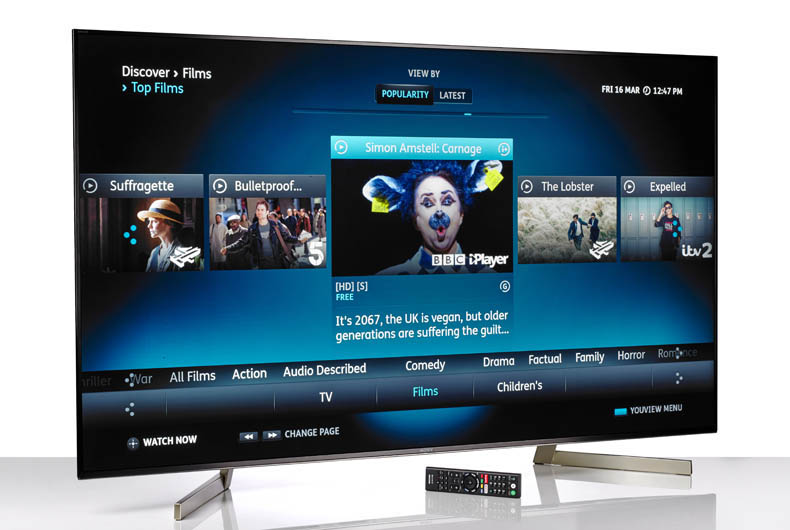
Drop to standard-def and the upconversion to HDR suddenly looks a bit much, particularly if you’re using the built-in Freeview or satellite tuners.
To bring things under control we’d suggest switching Live Colour down from Medium to Low or even Off to bring a bit more subtlety and realism back in. Standard-def images are relatively clear, albeit not to the extent LG’s 2017 OLEDs can manage. You don’t really want to be watching standard-def on a 4K TV this size, but if you have to you won’t be appalled.
The only real criticisms we have concerning the Sony’s picture quality are of its viewing angles and occasional blooming from the backlight. Neither is a huge concern, but are worth a mention.
The viewing angles are a good deal wider than those of Samsung’s 2017 TVs and the washing-out isn’t nearly as severe, but anyone sitting at oblique angles to the screen won’t get the full experience.
As for the blooming, there’s no denying the use of a direct, zonal-dimming backlight here is an improvement on the edge-lit alternative, but until we get to the point of having a backlight zone for every pixel (so over 8,000,000 of them) there’s almost no way to prevent the light bleeding at least a little bit into the areas around the pixels that are actually being lit.
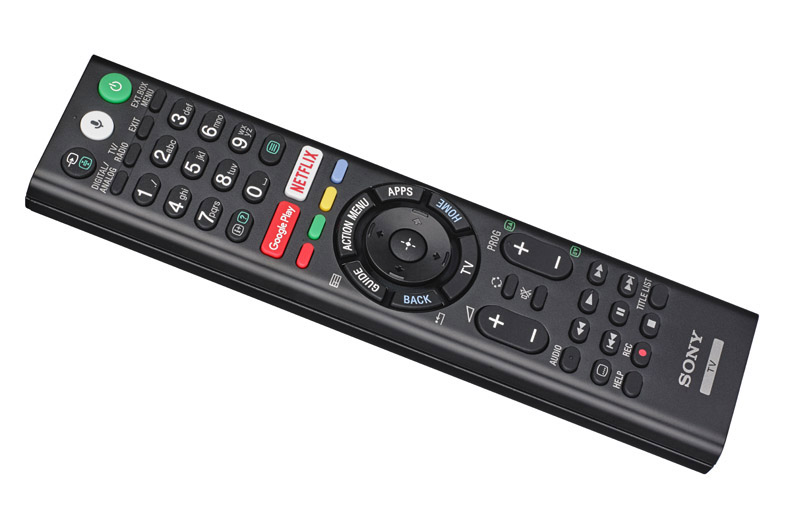
On an edge-lit TV you often see the whole panel losing blackness in order to light a bright white or coloured logo in the centre of the screen. On this Sony TV you get a small amount of bloom just around the logo itself.
It’s subtle enough that during normal viewing you’ll rarely (if ever) notice it, but pause a film on Netflix and this blooming will extend from the time bar at the bottom and into the black bars.
We don’t think it a big deal though. It’s barely noticeable in normal use and, by the standards of backlighting systems, the Sony is very good. Of course, these days you can ditch backlights altogether by buying an OLED TV, but even LG’s cheapest 2017 model will cost you a few hundred pounds more than this Sony.
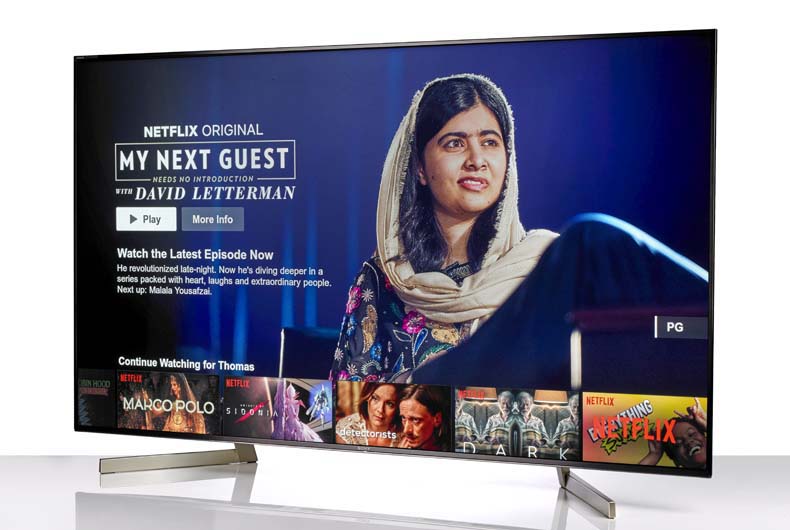
Even at a time that most TV manufacturers are selling their TVs with sensible, natural picture settings, the XF9005 impresses with its out-of-the-box performance.
It’s important to note that each source needs calibrating independently, so you can’t simply customise the Standard preset and apply it to everything you watch.
Any source or input through which you watch both SDR and HDR requires two sets of settings. This could be a nightmare, were it not for the fact that so few tweaks are necessary.
Our preference is to turn off Reality Creation and all noise reduction features, reduce Brightness by about five points for any SDR content, and switch Live Colour to Low on whichever tuner is being used. You’ll also want to switch the Light Sensor off if you don’t want to hobble the telly for punch and brightness.
Sound
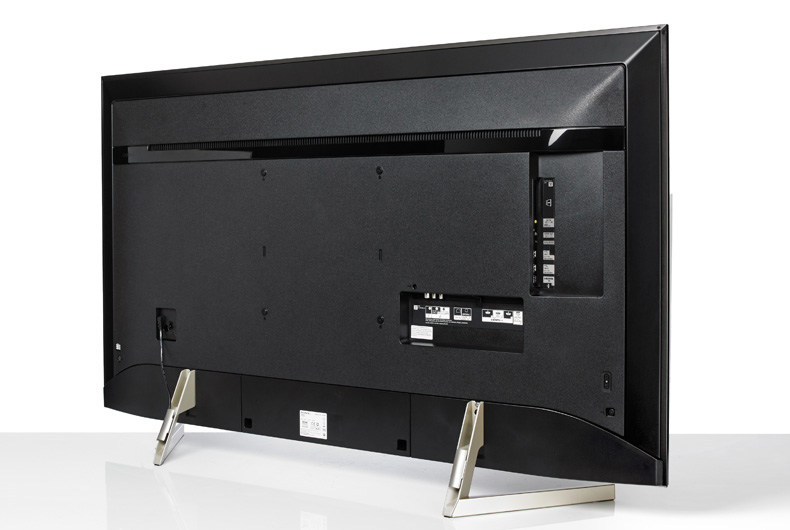
You may be wondering to yourself ‘when are they going to mention those ridiculous feet?’ so allow us to put you out of your misery. There is method to the apparent madness, in that the splayed feet are designed to straddle Sony’s new HT-XF9000 soundbar.
However, we genuinely don’t believe that’s reason enough for what is one of the most awkward-looking TV designs of recent memory.
The feet do feature simple but effective channels for your cables, and the TV’s bezel is pleasingly thin and stylish in the brushed aluminium finish. At 6.9cm, the XF9005 is far from super-skinny, but we don’t imagine this sort of thickness putting off anyone.
MORE: Best soundbar and soundbase deals
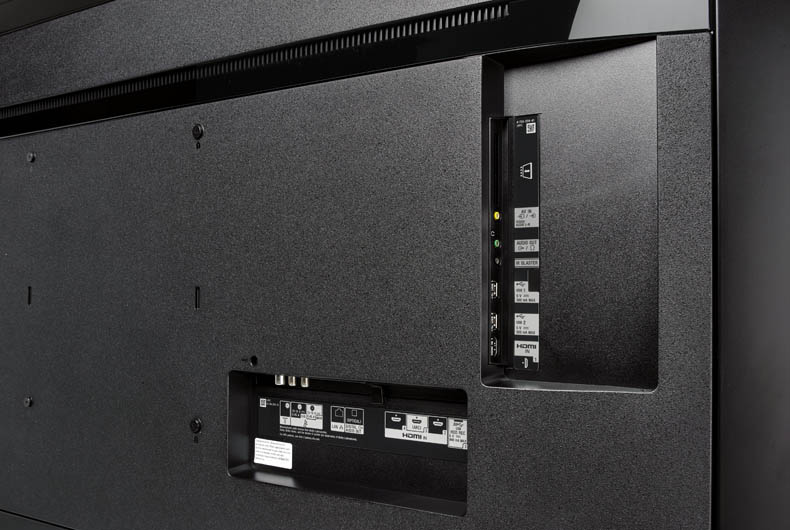
Considering the bezel is so thin and there are no visible speakers, the Sony projects sound into the room rather well, delivering audio, particularly voices, with a clarity and directness far from common in flatscreen TVs.
Detail is decent and there’s even a bit of low-level dynamic subtlety.
But it is also a bass-light audio performance, no matter how much you tweak the settings. It certainly doesn’t have the bombastic ability to make an action scene really sing.
Though a decent sound by TV standards, and perfectly adequate for Masterchef or Newsnight, if you watch anything more intense than that you’re going to want to add at least a soundbar to your shopping basket.
Verdict
The Sony KD-65XF9005 goes well beyond what we expect of a mid-range TV and delivers a picture performance not significantly short of the very best flagship models of last year.
Of course, £2300 is still a big outlay for a telly, and as it’s the first 2018 model to hit our testing rooms it’s difficult to tell whether we’ve got an Award-winner on our hands.
In its own right, though, the XF9005 is an absolute belter. If rival manufacturers even run it close over the next few months, we’re in for a stellar year for TVs.
See all our Sony reviews
What Hi-Fi?, founded in 1976, is the world's leading independent guide to buying and owning hi-fi and home entertainment products. Our comprehensive tests help you buy the very best for your money, with our advice sections giving you step-by-step information on how to get even more from your music and movies. Everything is tested by our dedicated team of in-house reviewers in our custom-built test rooms in London, Reading and Bath. Our coveted five-star rating and Awards are recognised all over the world as the ultimate seal of approval, so you can buy with absolute confidence.
